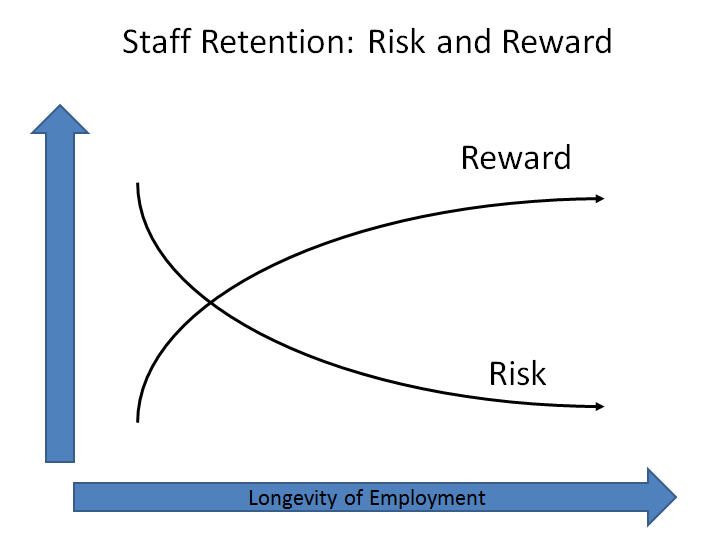
Ask any manager if their employees are important, and they will inevitably say “Yes!” Then ask if the motivations of those employees are also important and they will nod their head so vigorously that you’ll fear it might fall off! And yet, if you ask them to think of a direct report who they know well and then tell you what primarily motivates that person, most mangers will be unable to give you a clear and concise response.
Through the deployment of Talent Chaser’s Evidence-Based Recruitment methodology, we have learnt that getting the right person in the right role is a vital prerequisite to building an effective organization capable of functioning well in today’s fast-changing and highly competitive world. We have also learnt that assessing whether or not a person will be motivated in a role is a key element in the process.
It turns out that analyzing motivational priorities requires a good deal more effort than developing a personality test. Additionally, deploying an evidence-based approach to recruitment requires the deployment of technology that links the processes of recruitment and management development. All of this involves a significant cultural change to the way in which the organization is run and raises the question, “Is it all worthwhile?”
Experience Matters
Much of the data generated through the deployment of evidence-based management processes reveals time and time again the importance of understanding not only the demands that are placed on each employee but also how these match up to their motivational priorities. In two case histories, the case of the high flyer and the case of the tire manufacturer, covered in previous blog posts, I described how each individual brings a unique personality, perspective, skill, and knowledge to their work. I also described the “Multiplier Effect” and showed that, because of this, each employee can have a significant impact on the bottom line.
These two case histories also reveal that getting the right person in the right role won’t mean much unless we also manage each employee as an individual and employ them long enough for them to become proficient and make a useful contribution. For an employee to be truly effective, they need to be suited to their role and managed in a way that will keep them motivated while bringing them to peak performance. Experience shows that this takes care and time. Based on the results of our employee retention survey, it typically takes a great deal more care and a great deal longer than most business managers suppose.

When it comes to risks and rewards associated with new hires, what happens during early days of employment can have an enormous impact on whether or not the individual goes on to become a long-serving high performer.
At the start of their employment, the risks associated with each new hire are at their greatest. It is at this moment that an employee may inadvertently cause problems that may have long-term consequences.
The danger here is not only that the new hire will cause more problems than they solve but that in the process, their motivation may suffer. In a previous blog post, I described the Motivational Cycle. During this description, I pointed out that:
- We all like doing things we can do well and
- We don’t like doing things we can’t do well
These two basic motivational rules tell us that we have to be particularly careful when it comes to the management of new hires. During the early days of employment all employees are at their most vulnerable because they lack “hands on” experience. What this means is that the areas where they can do things well and therefore remain well motivated are at a minimum.
Properly constructed induction programs can make a big difference. We encourage all Talent Chaser users to undertake Induction Appraisals. The Performance Appraisal and Task Action Planning Module has tools that facilitate this process and which can be used to prioritize early-day activities. As an employee becomes more experienced, the risks reduce and the variety of situations within which the employee can remain well motivated increases.
Through the data generated within Talent Chaser, we now know that for the first 6 months, the risks will be high and the rewards low. Most new hires don’t really pay their way until after they have been employed for at least six months and, as described in the high flyer case history, it is not at all unusual for this to take much longer.
What this tells us is that throwing a new hire into a situation where their lack of experience could have significant downside risk, is not at all a good idea. Great care has to be taken to ensure that the risks associated with each role are thoroughly understood. Employee induction procedures need to ensure that responsibility is carefully delegated in conjunction with the employee’s capacity to handle related issues. Experience matters.
All of this serves to reinforce the notion that retaining employees once they have been appointed has to be a top priority. Put simply, it’s not possible to build high performing teams unless employees become sufficiently long serving both to reach peak performance and contribute that performance for an extended period of time.
It’s sad but true that, all too often, we treat employees according to the stereotype of the job in which they are employed. It turns out however that becoming much more focused on employee motivations, we can learn to recognize and tap into their individuality. Through this process we can not only build organizations that are much more innovative but also improve both talent retention and performance throughout the organization.
You must be logged in to post a comment.